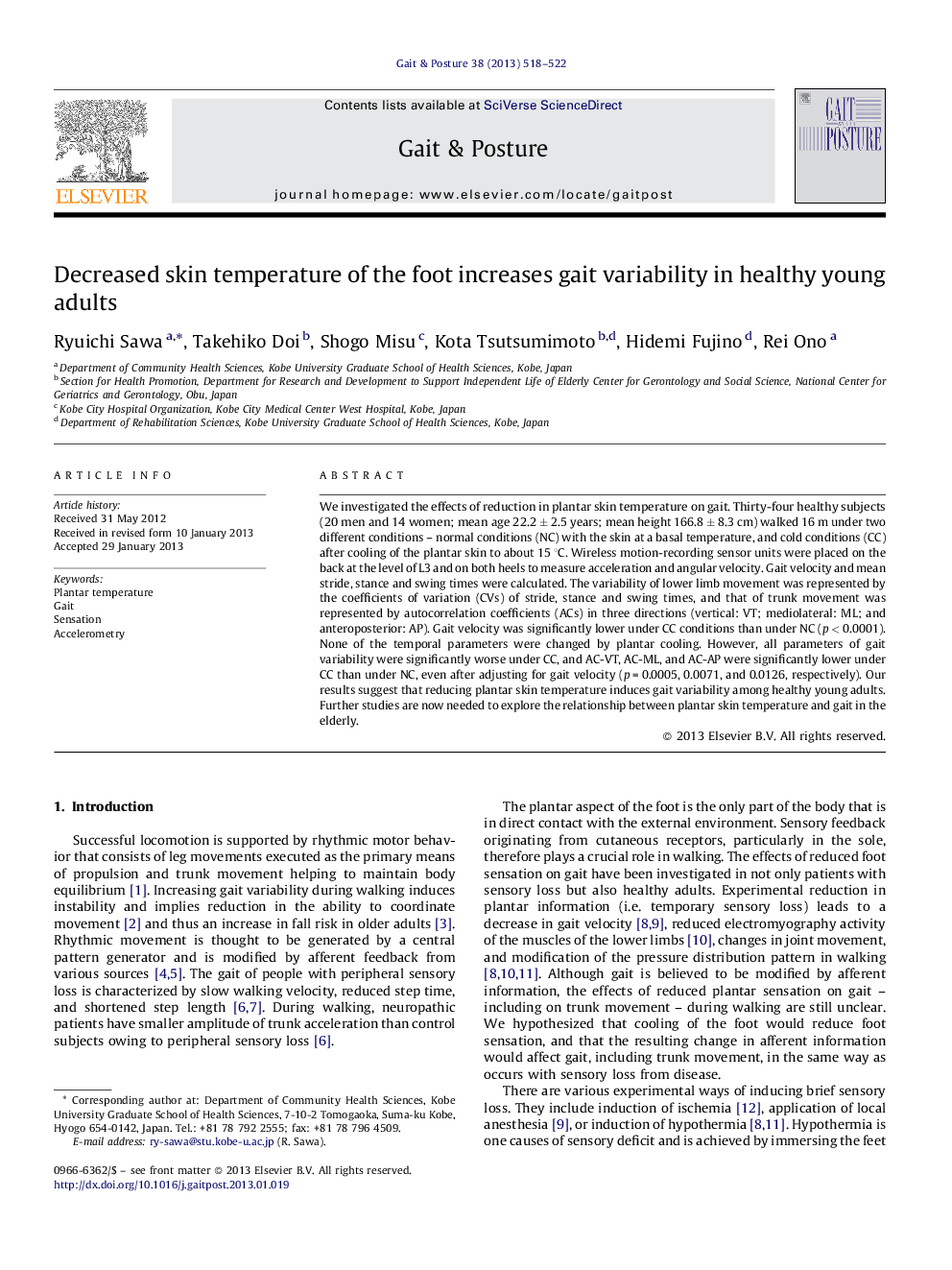| Article ID | Journal | Published Year | Pages | File Type |
|---|---|---|---|---|
| 6206651 | Gait & Posture | 2013 | 5 Pages |
We investigated the effects of reduction in plantar skin temperature on gait. Thirty-four healthy subjects (20 men and 14 women; mean age 22.2 ± 2.5 years; mean height 166.8 ± 8.3 cm) walked 16 m under two different conditions - normal conditions (NC) with the skin at a basal temperature, and cold conditions (CC) after cooling of the plantar skin to about 15 °C. Wireless motion-recording sensor units were placed on the back at the level of L3 and on both heels to measure acceleration and angular velocity. Gait velocity and mean stride, stance and swing times were calculated. The variability of lower limb movement was represented by the coefficients of variation (CVs) of stride, stance and swing times, and that of trunk movement was represented by autocorrelation coefficients (ACs) in three directions (vertical: VT; mediolateral: ML; and anteroposterior: AP). Gait velocity was significantly lower under CC conditions than under NC (p < 0.0001). None of the temporal parameters were changed by plantar cooling. However, all parameters of gait variability were significantly worse under CC, and AC-VT, AC-ML, and AC-AP were significantly lower under CC than under NC, even after adjusting for gait velocity (p = 0.0005, 0.0071, and 0.0126, respectively). Our results suggest that reducing plantar skin temperature induces gait variability among healthy young adults. Further studies are now needed to explore the relationship between plantar skin temperature and gait in the elderly.
⺠We investigated the effects of reduction in plantar skin temperature on gait. ⺠Decreasing plantar skin temperature will cause the reduction in gait velocity. ⺠Decreasing plantar skin temperature will not influence on the temporal parameters. ⺠Decreasing plantar skin temperature will worsen gait variability.
